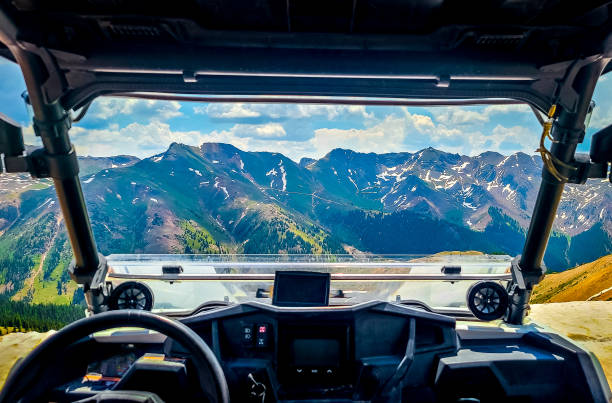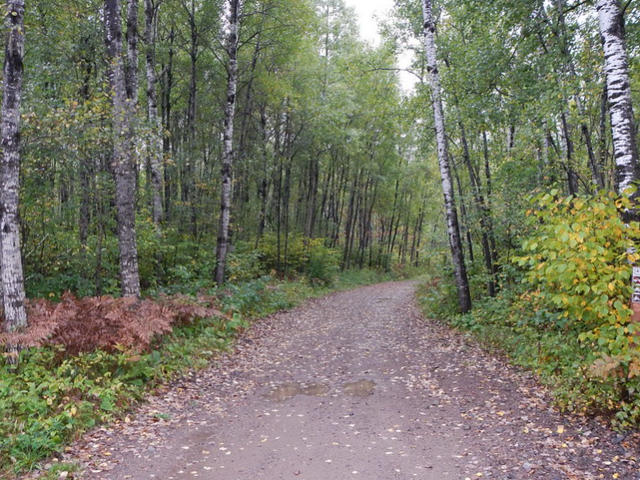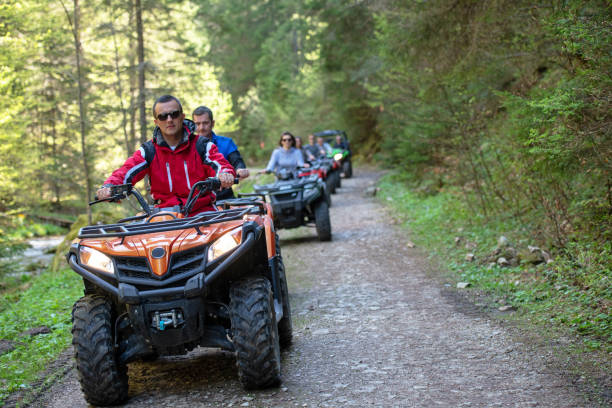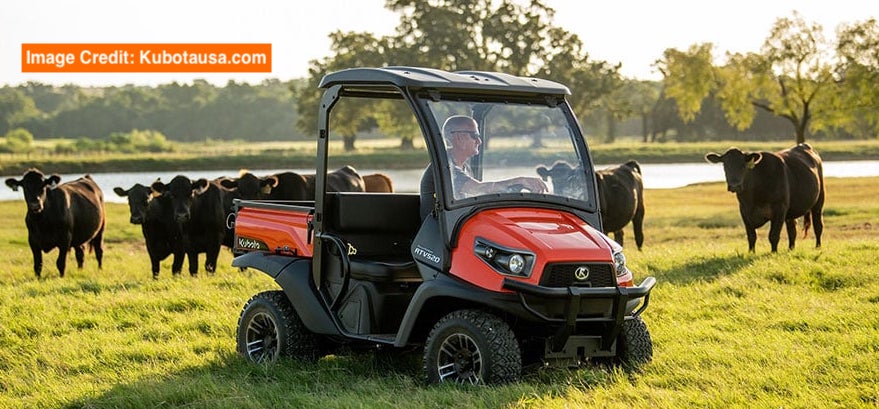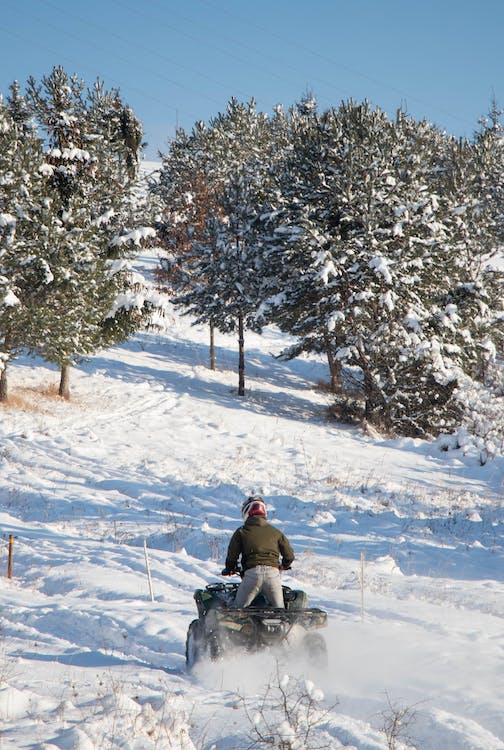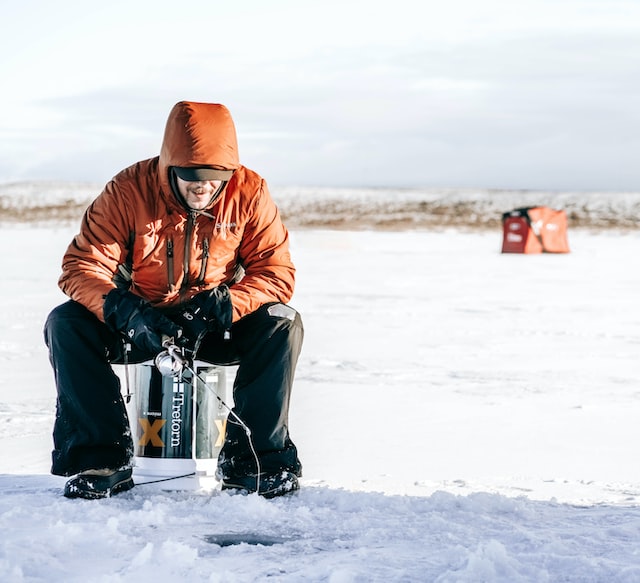As an Amazon Associate I may earn a commission from qualifying purchases at no additional cost to you.
Participating in trail maintenance is a crucial part of ensuring the longevity and safety of off-road trails. Both ATV clubs and the Side by Side community play vital roles in this effort, though their approaches can vary.
The core difference lies in the organized nature of ATV clubs compared to the more community-driven approach of Side by Side enthusiasts.

ATV clubs often have established structures with clear channels for communication and coordination. Members participate in regularly scheduled maintenance efforts, benefiting from the club’s resources and connections.
Side by Side riders, on the other hand, frequently center their efforts around community service projects. Their flexibility can lead to innovative solutions and stronger relationships with local stakeholders.
The impact of these differences is significant for trail upkeep. Coordinated efforts by ATV clubs may mean larger-scale projects are completed efficiently, while the adaptability of the Side by Side community can be crucial when addressing unforeseen issues. Each group brings unique strengths to trail maintenance, highlighting their importance in supporting a sustainable outdoor experience.
The Importance of Trail Maintenance
Trail maintenance plays a crucial role in preserving the quality and usability of natural paths. It involves various activities to ensure trails remain safe, accessible, and beneficial for all trail users.
This section highlights the environmental, safety, and economic factors that make trail maintenance essential for both individuals and communities.
Environmental Impacts
Maintaining trails on public lands helps protect natural habitats from degradation. Erosion is a significant issue that can be exacerbated by heavy use from mountain biking or ATVs.
Routine maintenance prevents soil loss and protects vegetation. Efforts like installing water bars and clearing debris help manage stormwater runoff. This preserves water quality and maintains the health of nearby ecosystems.
Properly maintained trails also discourage users from creating unauthorized paths that damage ecosystems, helping preserve biodiversity.
Trail Safety and Accessibility
Trail maintenance is vital for ensuring safety and accessibility for all users, including cyclists and campers.
Clearing fallen branches, tree limbs, and overgrown vegetation enhances visibility and reduces accident risks. Properly marked trails guide users effectively, reducing chances of getting lost.
Repairing uneven surfaces and addressing muddy areas help maintain a smooth and firm trail surface. This enables users of different skill levels to navigate safely.
By maintaining bridges and walkways, accessibility for people with disabilities is also improved, promoting inclusivity.
Economic and Recreational Benefits
Well-maintained trails contribute significantly to local economies by attracting tourism and recreation. They provide opportunities for mountain biking, hiking, and camping, encouraging outdoor activities that boost local businesses.
Visitors spend money on gear, food, and accommodations, supporting economic development.
Communities benefit from these recreational opportunities, improving residents’ health and wellness. Moreover, participating in trail maintenance fosters community spirit and responsibility. Volunteer events by clubs and organizations strengthen community ties while reducing public maintenance costs.
ATV Club and Side by Side Community Overview

ATV Clubs and Side by Side communities have distinct histories, responsibilities, and cultural events. Each group is dedicated to trail maintenance and the promotion of safe off-road vehicle operations. Highlighting these areas reveals both the commitments and social dynamics within these active communities.
History and Culture
The ATV Club has roots tracing back to the rise of all-terrain vehicles in the 1970s. Early enthusiasts formed clubs to share riding experiences and address the challenges faced by trail riders.
These clubs developed a strong culture of camaraderie, rooted in shared responsibility and passion for trail riding. Over time, a formal structure was established for organized events and maintenance work.
The Side by Side community, on the other hand, emerged more recently. As 4×4 and larger off-road vehicles gained popularity, riders began organizing into more specialized groups.
These clubs emphasize safety and community involvement, fostering a culture of inclusivity.
Despite different origins, both communities value the preservation of the natural environment and promote environmentally responsible riding practices. They often collaborate to maintain and enhance trail systems.
Maintenance Responsibilities
ATV clubs consistently engage in trail maintenance duties. Members are often involved in clearing fallen debris, marking trails, and repairing worn paths.
Trail riding safety is a top priority, requiring regular inspection and improvement of the infrastructure. These clubs often collaborate with local authorities to ensure the safety and accessibility of trails for all off-road vehicles.
Side by Side groups also contribute significantly to keeping trails in good condition. Given their larger vehicle size, they focus on broader trail improvements. Initiatives include reinforcing trail surfaces and enhancing markers for better navigation.
Both communities demonstrate a high level of volunteerism, with members donating time and resources to ensure seamless and safe riding experiences.
Community Events and Rallies
Events and rallies are integral to both the ATV Club and Side by Side community. These events include riding competitions, safety workshops, and social gatherings.
Such events spice up community life and foster connections among club members. Annual rallies and charity rides are popular and serve as fundraising opportunities for trail maintenance projects.
The Side by Side community often hosts similar events with a focus on family-friendly activities. These gatherings attract enthusiasts of all ages, emphasizing community involvement.
The events provide platforms for education, advocacy, and fun, enriching the riding experience while reinforcing the community’s core values.
Trail Maintenance Techniques
Trail maintenance is a critical aspect of ensuring safe and enjoyable outdoor experiences. This involves routine upkeep, effective repair and construction methods, and innovative building practices.
Routine Trail Upkeep
Routine upkeep of trails focuses on regular inspections and addressing minor issues before they escalate. This includes removing debris, clearing overgrown vegetation, and fixing drainage problems.
Volunteers often use tools like pruners and shovels to maintain trail surfaces and surroundings.
Regular monitoring helps identify erosion, litter, or other potential hazards. Frequent visits to trails by dedicated teams ensure that pathways remain accessible and safe.
Scheduled maintenance days, often organized by local clubs or associations, encourage widespread community involvement.
Efforts may also include tasks such as sign replacement to direct trail users efficiently. Proper signage aids navigation and helps protect sensitive environments from unnecessary foot traffic or ATV activity.
Repair and Construction Methods
Repair and construction methods focus on restoring damaged trails and creating new pathways. Techniques include building retaining walls, filling washouts, and reinforcing trail surfaces.
Materials such as gravel, wooden planks, or geotextiles are commonly used to reinforce trails.
Bridge construction over streams or gullies is essential for accessibility and safety. In areas prone to erosion, they may employ methods to stabilize the ground, such as installing terraces or using mulching.
Volunteers need training in these methods to ensure the safety and durability of trail structures.
Collaboration with environmental experts can help in selecting sustainable materials and methods. This reduces the ecological footprint while ensuring that new trail construction aligns with conservation goals.
Innovative Trail Building Practices
Innovative practices emphasize sustainability and enhancing the user experience. This includes incorporating principles of low-impact design to reduce trail footprint on surrounding ecosystems.
Techniques like switchbacks on steep slopes help in minimizing soil erosion while improving accessibility.
Cellular confinement systems are gaining popularity as they improve load distribution on trail surfaces. Additionally, digital mapping and drone technology assist in precise planning and monitoring of trail networks.
Incorporating natural elements, such as utilizing native plants for reinforcement, can stabilize banks and control erosion. Planting efforts not only strengthen the trail infrastructure but also enhance biodiversity.
Trail builders are increasingly adopting these eco-friendly strategies to promote long-term sustainability.
ATV Club Participation in Trail Work
ATV clubs are actively involved in the maintenance and improvement of off-road trails. They focus on volunteer efforts, handle various funding challenges, and collaborate closely with local authorities to enhance trail conditions.
Volunteer Work and Projects
ATV clubs, particularly in regions like Montana, Wyoming, and Idaho, organize frequent trail maintenance events. These projects often include activities such as trail cleanup, erosion control, and signage updates.
Clubs coordinate volunteers who dedicate time and effort to ensure trails remain accessible and safe for public use.
To maximize impact, clubs usually plan these projects in advance, matching volunteer skills with specific tasks. Local club members show a strong commitment, often participating in these initiatives on public lands, which benefit the broader off-road community.
Funding and Project Cost Considerations
Financing trail maintenance projects poses a significant challenge for many ATV clubs. They often rely on membership fees and donations to cover project costs, which can vary depending on the size and scope of the work required. Grants from state and federal agencies can supplement these funds, aiding in larger projects.
Clubs in Montana, Wyoming, and Idaho frequently collaborate to pool resources. This approach allows them to tackle more ambitious tasks, such as rebuilding damaged sections or installing new trail features.
Efficient budgeting and responsibility in fund allocation are vital to the success of these projects.
Collaborations with Local Authorities
ATV clubs engage with local authorities to coordinate trail maintenance effectively. Partnerships with state and national parks, forest services, and local municipalities improve access to public lands and ensure compliance with environmental regulations.
These collaborations are particularly effective in areas like Montana and Idaho, where public land management is complex.
Working closely with these entities helps clubs navigate permitting processes, enhance trail systems, and secure support for long-term projects. Authorities often appreciate the involvement of the ATV community, as their efforts contribute to maintaining the ecological balance while promoting recreational use.
Such partnerships also facilitate mutual exchanges of knowledge and resources.
Side by Side Community Service Efforts

Side by Side vehicle enthusiasts are significantly involved in various community service efforts, focusing on maintaining trails, engaging in environmental conservation, and conducting safety programs. Their involvement enhances the quality and sustainability of outdoor areas and supports safe recreation.
Trail Cleanup and Maintenance
Community members organize regular trail cleanup events, targeting litter removal and minor repairs. These efforts ensure that trails remain safe and usable for all visitors.
Volunteer teams also engage in preventive maintenance, such as clearing fallen trees and repairing erosion damage.
Many clubs provide tools and equipment necessary for these activities. They collaborate with local authorities to ensure compliance with environmental regulations, enhancing coordination.
These proactive measures help preserve the natural beauty and functionality of trails, improving users’ experience.
Environmental Conservation Initiatives
Side by Side groups often engage in reforestation and habitat restoration projects to support local ecosystems. These initiatives include planting native species and removing invasive plants.
Such activities help maintain biodiversity and improve natural landscapes.
Partnerships with environmental organizations amplify their impact. These efforts also serve to educate both members and the public about the importance of ecological balance.
Encouraging responsible vehicle use reduces negative environmental impacts, demonstrating a commitment to conservation.
Safety and Educational Programs
Safety is a priority for Side by Side communities, evident through the organization of rider safety courses and workshops. These programs highlight critical topics such as proper vehicle handling, trail etiquette, and emergency response practices.
Educating participants ensures safer recreational activities.
Workshops often include demonstrations on essential maintenance tasks, promoting vehicle longevity. The focus on safety also extends to promoting awareness about environmental protection, aligning with broader conservation goals.
These programs are designed to foster a culture of responsibility and awareness among riders.
Equipment and Safety in Trail Maintenance
Trail maintenance is vital for a sustainable and enjoyable outdoor environment. Participants must pay attention to their machines and tools to ensure a smooth operation.
The guidelines cover machine upkeep, tool selection, and safety measures to keep volunteers safe and efficient.
ATV and Side by Side Maintenance
Proper maintenance of ATVs and side by sides is crucial. Frequent checks of oil levels, brakes, and tires prevent breakdowns and ensure safety.
Winches should be tested to confirm they work in challenging situations. Individuals should adhere to manufacturer-recommended service intervals for consistent performance.
Simple steps, like keeping the equipment clean and properly stored, enhance longevity. Regular inspections allow for the early detection of issues, preventing larger problems during trail maintenance projects.
Well-maintained vehicles contribute to the efficiency and success of trail work.
Essential Trail Maintenance Tools
Selecting the right tools impacts trail maintenance efficiency. Tools like shovels, rakes, and pruners are core to clearing and shaping trails.
Chainsaws, when required, must be handled by experienced operators. For transporting debris, wheelbarrows and carts are essential.
Participants should also have sturdy gloves and eye protection. Toolkits for quick repairs on the trail help avoid delays.
Well-maintained tools lead to smoother operations and higher-quality trail conditions. Specialized equipment, like brush cutters, might be required depending on terrain and growth density.
Safety Protocols for Volunteers
Ensuring volunteer safety is a priority. Participants should wear helmets, gloves, and proper footwear during trail maintenance.
Basic first aid knowledge and kits are important to tackle minor injuries. Clear communication, through radios or signals, keeps teams cohesive and reduces risks.
Volunteers need to be trained in ATV safety practices, ensuring they are comfortable with vehicle handling.
Weather conditions, such as storms or extreme heat, should be monitored to prevent hazardous situations. Proper hydration and frequent breaks prevent fatigue.
Adhering to safety protocols keeps maintenance activities productive and secure for all involved.
Best Practices for ATV and Side by Side Riders
Riders of ATVs and Side by Sides can greatly contribute to the sustainability of trails and public lands. Responsible practices involve both careful riding and active participation in community initiatives.
Responsible Riding on Public Lands
Responsible riding ensures the preservation and enjoyment of trails. Riders should stick to designated paths to avoid damaging sensitive habitats.
Following posted signs and respecting trail closures is essential to protect wildlife and vegetation. Riding at safe speeds prevents accidents and disturbances to other trail users.
Yielding to non-motorized users helps maintain a peaceful environment. Members of riding clubs often practice and promote these habits, fostering a community of respectful riders.
Minimizing Environmental Impact
ATV and Side by Side riders can take several actions to minimize their environmental footprint. Using properly maintained vehicles reduces emissions and prevents leaks of oil or gas onto the land.
Packing out trash and avoiding littering helps maintain the natural beauty of the trails. When crossing streams, riders should use bridges or designated fords to prevent waterway contamination.
Modifying tires for minimal soil displacement can also aid in preserving trail integrity.
Participation in Community Services
Active participation in community service by ATV and Side by Side riders can significantly benefit trail systems and public lands. Joining trail maintenance events organized by riding clubs is one way to give back.
Riders can offer manual labor for tasks like clearing debris, repairing trail erosion, and ensuring signage is visible and accurate. Engaging in educational outreach creates awareness among other trail users about best riding practices.
Volunteering contributes not only to the environment but also enhances the reputation of the riding community.
Evaluating the Impact of Volunteer Work

The role of volunteer work in trail maintenance significantly influences trail accessibility and sustainability. By examining trail usage statistics, gathering feedback from trail riders, and focusing on long-term goals, the effectiveness of volunteer efforts can be better understood.
Trail Usage Statistics and Reports
Data reveals the contributions of ATV clubs and Side by Side communities in maintaining trails. Increased availability and quality of trails on public lands are often correlated with higher volunteer participation rates.
According to recent reports, areas where volunteers are active see fewer trail closures. Statistics show a 20% reduction in reported trail damage following organized volunteer workdays.
Such data highlights the tangible benefits of community involvement.
Feedback from the Trail Riding Community
Feedback from trail users and the trail boss provides valuable insights into the impact of volunteer initiatives. Riders generally express increased satisfaction with trail conditions post-maintenance events.
Improved signage and clear paths enhance the riding experience.
Comments from the community often praise volunteers for ensuring smoother and safer trails. Suggestions from these riders frequently guide future maintenance efforts, ensuring that volunteer activities align with user needs and preferences.
Long-term Sustainability Goals
Long-term goals for trail maintenance focus on establishing sustainable practices through continuous volunteer engagement.
The commitment of ATV and Side by Side clubs supports the preservation of natural resources and promotes responsible trail use.
Strategies include forming partnerships with local authorities to secure consistent funding and resources.
Volunteer programs encourage environmental education, fostering a sense of responsibility among trail users.
These efforts aim to ensure that trails remain accessible for future generations.

